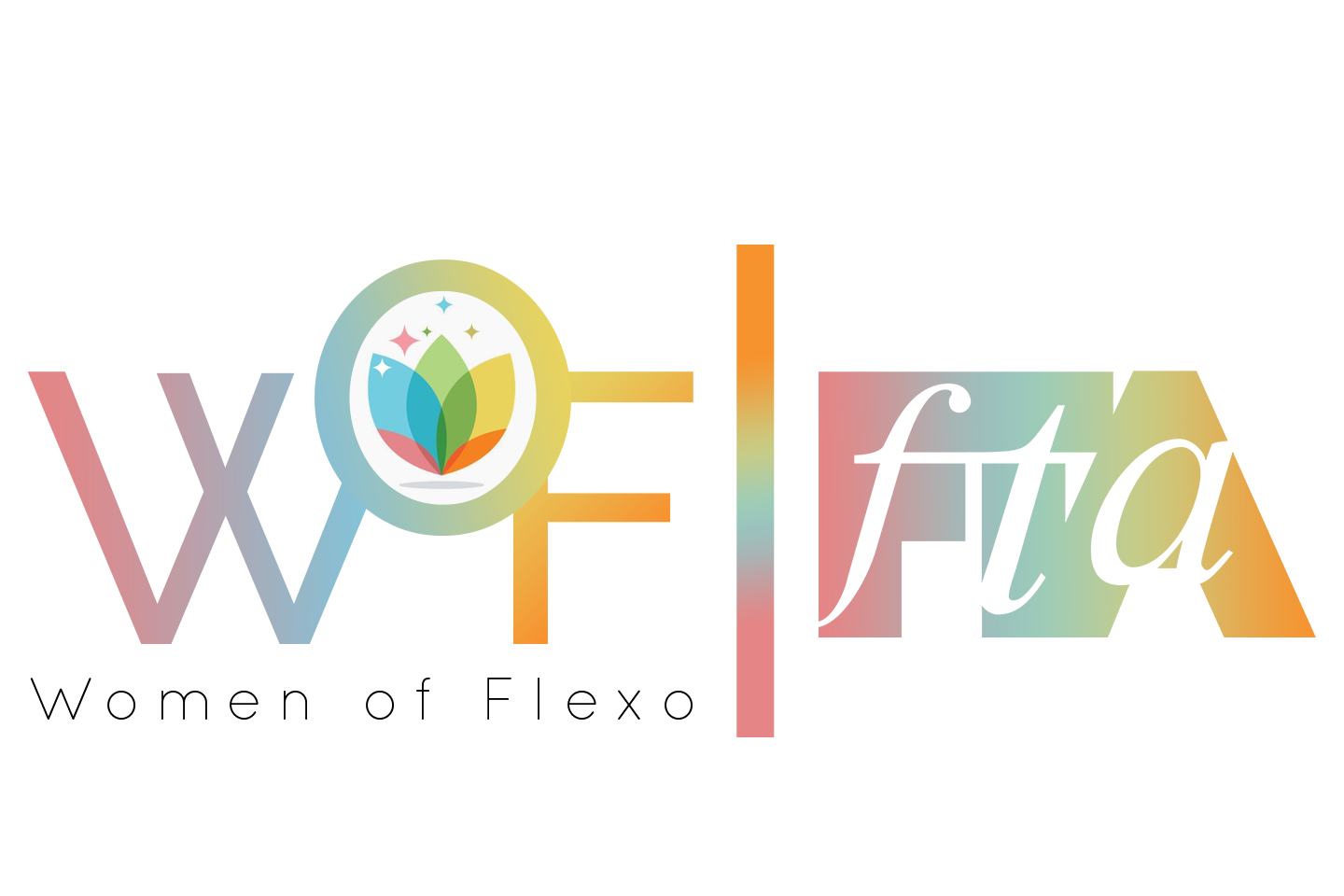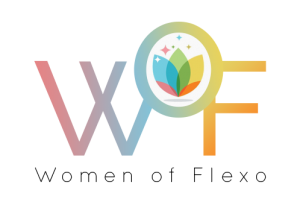Women’s History Month
Women’s History Month
As we near the end of March, which is known as Women’s History Month, we reflect on all of the great things women have accomplished in the flexographic printing industry! Women’s History Month has been celebrated in the U.S. since 1987, several decades after the flexo industry began in around the 1950’s, according to a 2014 article in Label & Narrow Web magazine.
Women have become increasingly involved in flexography, securing sales roles, technical responsibilities, and press-side positions. This growth led to the founding of FTA’s Women of Flexo group in 2019 which has nearly 1,465 members today.
Over the years, FTA has recognized dedicated flexographers in the field through the giving of their annual President’s Award. Many women have received this honor (click here to preview the roster dating back to 1991) and continue to step up in a largely male-dominated industry.
We “sat down” with Jean Jackson (2003 recipient) and Arleen Neustein, (2000 recipient) to discuss their perspectives on the industry and how they have seen the field of flexography grow over time. Both women are also FTA Hall of Fame inductees (Neustein, 2003 and Jackson, 2007) – the only two women of 58 total inductees.
WOF: When did you first enter the flexographic field and how has your career evolved over time?
Jackson: Graduating in 1980 as a Mechanical Engineer from the University of Illinois, I started my career in a technical customer service position at the Union Carbide Coating Service (UCCS) manufacturing plant in Connecticut. We serviced customers that were looking to extend their product life or production line uptime by applying specialty ceramic, carbide or metal coatings that were customized to their application. It was a great learning experience as we dealt with a wide range of customers and people. As only a handful of women were working in manufacturing – I was the second – I learned to work with a wide range of people and was accepted after the normal test period for anyone new. It was great to have the first female engineer as a mentor and friend to learn from at that plant. A year and half later, I got promoted to Technical Sales Engineer and moved to a new plant in the Chicago area and called on the steel mills in the area along with other manufacturing areas.
As the steel industry declined and closed in the mid-1980’s, I was asked to join a small group to explore some new technology in the print industry – laser engraved ceramic anilox rolls that we had been a partner in development in England. UCCS, as one of the primary suppliers of thermal spray coating, had ceramic coated the original mechanically engraved anilox roll in 1969 for Pamarco and in 1970 and 1971 for two other anilox companies. One of those companies was my customer, so it provided a good opportunity to learn and explore the market, especially when UCCS decided to move forward with a small direct sales team. With the introduction of doctor blades, anilox roll life needed to improve to deliver the print quality improvements that better ink control could deliver to the flexographic industry. I found an industry that was ready for change and people who were open to testing and learning and moving the industry forward. Many of those people and companies moved flexo to the quality, innovations and productivity that we expect today. It was very exciting for a young engineer to be testing and looking at new technology with customers. Arleen Neustein was the first woman of flexo who I met at an early trade show and later worked with her brother, Michael Cohen, and her at Excelsior. Many of those early innovators became friends and partners in new developments, even if we were competitors, as flexographic printers were looking to take on offset and gravure business.
My career continued to grow and I worked for a couple of other companies were I expanded my flexographic knowledge. I had the opportunity to share and learn at industry association programs and university industry programs as a speaker and partner. Even in retirement, I’m still actively involved with the FTA FIRST and FQC committees.
Neustein: I “officially” entered the field full-time after graduating from college (Pratt Institute) with a B.S. in Art Education in 1965. However, since the family owned a small converting company in New York that made cellophane, paper and polyethylene bags and had a press department that printed four spot colors on stack presses (12 inches, 24 inches and the big press – 36 inches), I had been providing hand-drawn designs for our local customers from the time I was in junior high school. A quick note here (since this is for Women of Flexo readers), the company was run by my mother who knew how to make the most of free labor.
After college, I started working full-time in the family business with the focus of bringing graphic design, prepress and platemaking internal both as a marketing advantage and as a profit center. Before I could do that well, I needed to gain experience in the production environment learning the capabilities of the equipment and responsibilities of the people on the floor. I mounted (and demounted) plates, mixed inks and worked as a pressman’s helper. All of this helped me understand how the preparation of graphics could lead to higher quality output on the equipment available.
Needless to say, I was the only female working on the factory floor. At that time, there were no schools, FTA programs or educational materials available. I quickly learned that there were the naysayers (to put it nicely) and the mentors. I had mentors both on the work floor and especially from suppliers. I asked questions of everyone who had the knowledge I needed and they amazingly provided more than just the information – they provided support and friendships, many of which still exist 50 years later.
WOF: Have you seen an evolution in womens’ involvement in the field? What has that looked like, from your perspective?
Jackson: When I was at college and during my early career, I was often the only woman or one of only a handful of women in meetings or events. It was nice to find a small group of very capable, knowledgeable, strong women when I got involved in the flexo industry. They were helpful, straightforward and positive in challenging me and others. It has been great to see the growth of women in the industry and the energy that most of them bring. There are many great role models for women and men today.
Neustein: When I first started, I did have my mom as a role model on how a strong woman can run a business in a man’s world. She did it, supposedly, out of necessity (her husband died leaving her with four young children and a fledgling business), but also out of her own drive and personality.
I guess it was in me as well. When I attended conferences, I was usually the only female in the room, other than spouses. As time went on, I was aware of the growing female population – especially as sales representatives and in customer service positions. I’ve always remarked that women show an exceptional ability to focus on the details that are so important in this industry.
WOF: How do you feel about the state of the industry today and womens’ involvement? How would you like to see things progress?
Jackson: Women’s presence at university programs has grown and in many programs, there are now more women than men. We are seeing more of them in the industry too.
The pressroom could use the same influences as we are short on press operators and losing trade schools, so the influence to get women in the pressroom is challenging. It is a good career with growth and the pressroom today has less of the physical limitations that we had in the past. We need to get that message out for the pressroom through female managers and vocational training discussions.
Neustein: Over the last 10 years, I’ve seen a much broader involvement from women. We have expanded our presence as owners and executives, and on the manufacturing floor. We also see more representation in national organizations, like FTA. I see a passion for the industry that is wonderful. I’ve always had it as a driving force and can see it in the young women entering the field from colleges like the ones who get involved with the Phoenix Challenge.
WOF: What is the importance of groups like the Women of Flexo? Do you have any words of encouragement for other flexo women out there?
Jackson: Women of Flexo can become a group of pioneers, mentors and resources for women in the industry and for companies looking to expand their diversity and retain employees. It is a good opportunity to network and build business relationships and continue to learn. I suggest that the flexo women stay positive, take on new challenges, learn from your failures/errors and get involved. When you participate and share, you and everyone gains and grows. That is how flexo got to be the high quality print process that it is today.
Neustein: I was amazed at the turn-out of women at the first (almost impromptu) gathering. I’ve always had to forge my own way, forming business relationships and industry friendships on my own. At that meeting, so many ideas and issues were brought up that still seem to be a common thread for working women. WOF is a group that can help form strong relationships and provide support for the women in our industry. The key is to put yourself out there and take part. Join in on the committees and do the work with others in the field. I know I always get back more from contributing than I gave.
Click here to learn more about the Women of Flexo and how to join.



